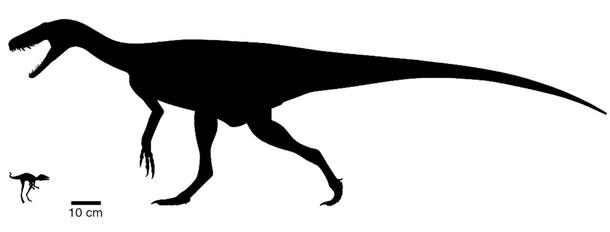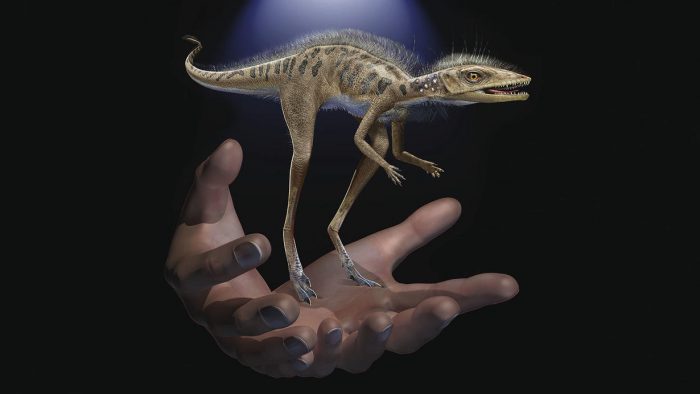Dinosaurs are the giants of history—the largest land animals to ever have lived. And yet their modern descendants—birds—are some of the smallest vertebrates (animals with backbones) on the planet.
Now a new fossil discovery shows that this strange size difference works both ways.
Meet Kongonaphon kely, a hand-sized ancient reptile that lived 237 million years ago. A fossil of this tiny dinosaur ancestor was found in modern Madagascar. And scientists are very excited about what it could tell us about how dinosaurs—and other prehistoric reptiles—came to be!
Bipedal beginnings
A bipedal animal is one that walks on two legs. Like us!
Many dinosaurs were bipedal, too. And even though many others were quadrapeds (walked on four legs), they had different hipbone structures from other reptiles. These different hipbones, putting legs underneath the body instead of spread out from the sides, are a common characteristic of all dinosaurs.
K. kely existed before the dinosaurs. It was bipedal and had these types of hips, which puts it in an animal group known as Ornithodira. Both dinosaurs and pterosaurs (flying prehistoric reptiles) are a part of this group. Which makes this 10-centimetre (4-inch) tall animals a relative of both of them. So many diverse—and enormous—creatures, perhaps all starting with this funny little critter!
Small, but ready to take over

A size comparison of K. kely and an early dinosaur called Herrerasaurus. (Silhouettes from phylopic.org by Scott Hartman (CC BY 3.0) and Frank Ippolito/© AMNH)
K. kely is not the only tiny dinosaur ancestor that has been discovered. But finding it is helping paleontologists paint a clearer picture of how dinosaurs evolved—and why they were different to other reptiles at the time.
At the time that K. kely was alive, it was not a dominant species. It would've been surrounded by much bigger, non-dinosaur reptiles that share similarities with modern crocodiles and monitor lizards. Those carnivores were at the top of the food chain back then.
But the tiny creatures were staking their claim on new territory. They ate insects, not meat. They began developing fluff and feathers to warm their small bodies. And they used a type of movement—bipedalism—that was quicker and more agile than other reptiles had. They may have even already been experimenting with early flight as a way to escape the deadly jaws of bigger reptiles.
Path to greatness
So much research still needs to be done on fossils like this. But for now, K. kely is showing researchers an animal that was starting small, but dreaming big.
Though tiny, its descendants—dinosaurs and pterosaurs—would use so many of its traits to become the longest reigning animals in history. Fluff and feathers for warmth. Legs underneath the body for speed and agility. And, one day, flight to explore the skies.
And even when the dinosaurs did die out, K. kely's breakthroughs carried on in modern birds. Do you think that this little critter knew it was on to something so big?
 The name Kongonaphon kely means "tiny bug slayer". (Frank Ippolito/AMNH)
The name Kongonaphon kely means "tiny bug slayer". (Frank Ippolito/AMNH)










I LOVE DINOS # DINOSAURS FOREVER
I AGREE #DinosRock
did it sing as well?